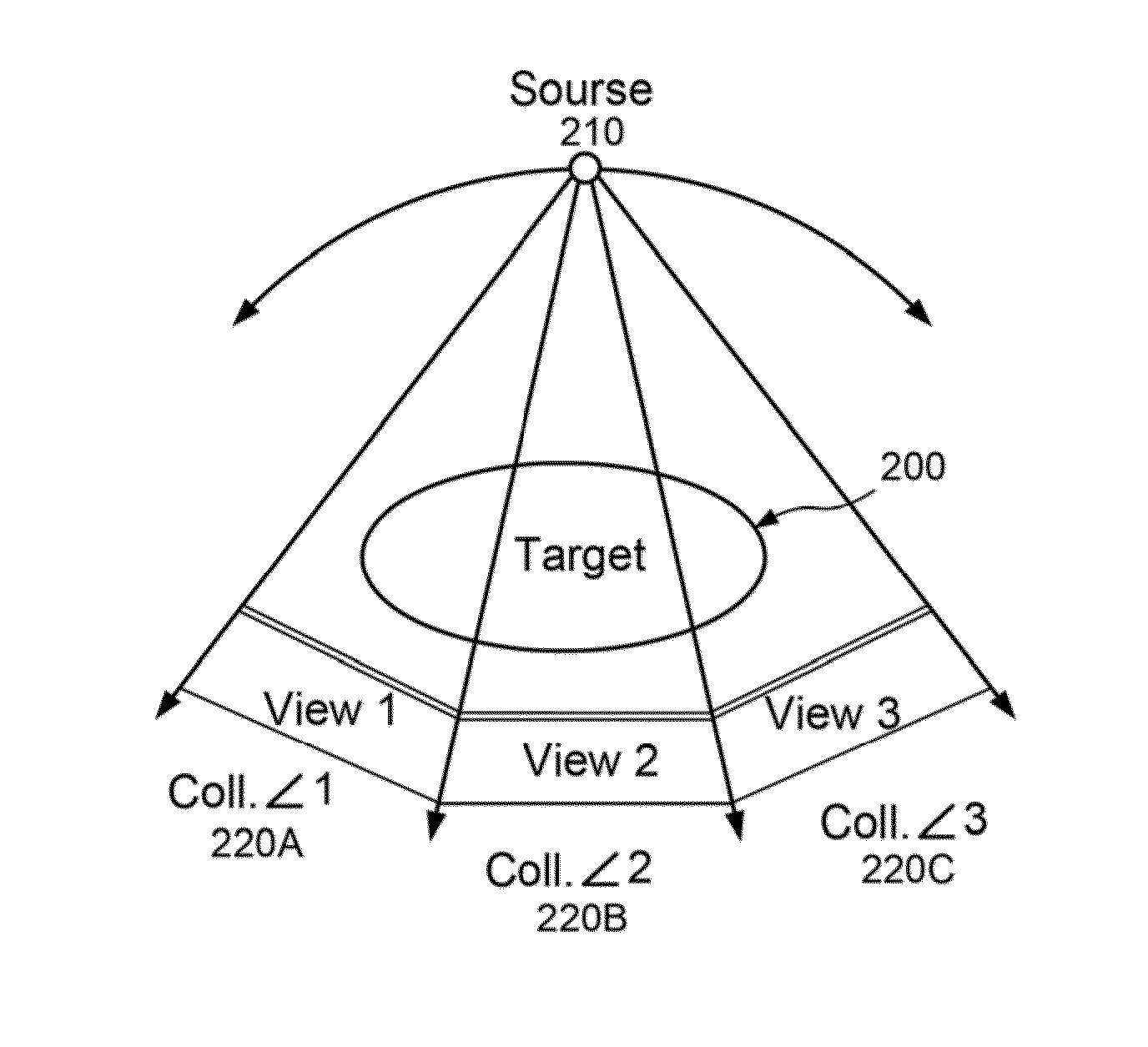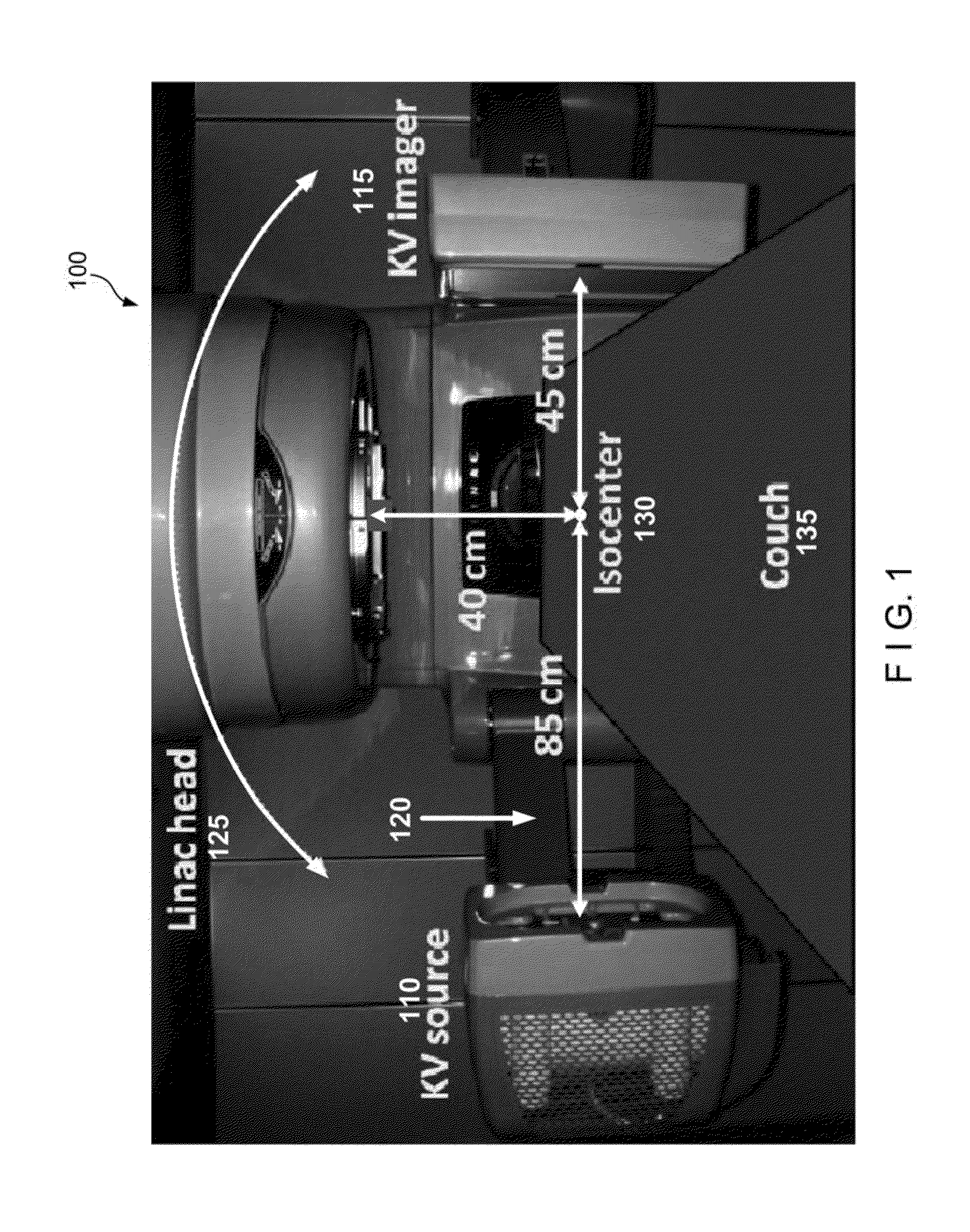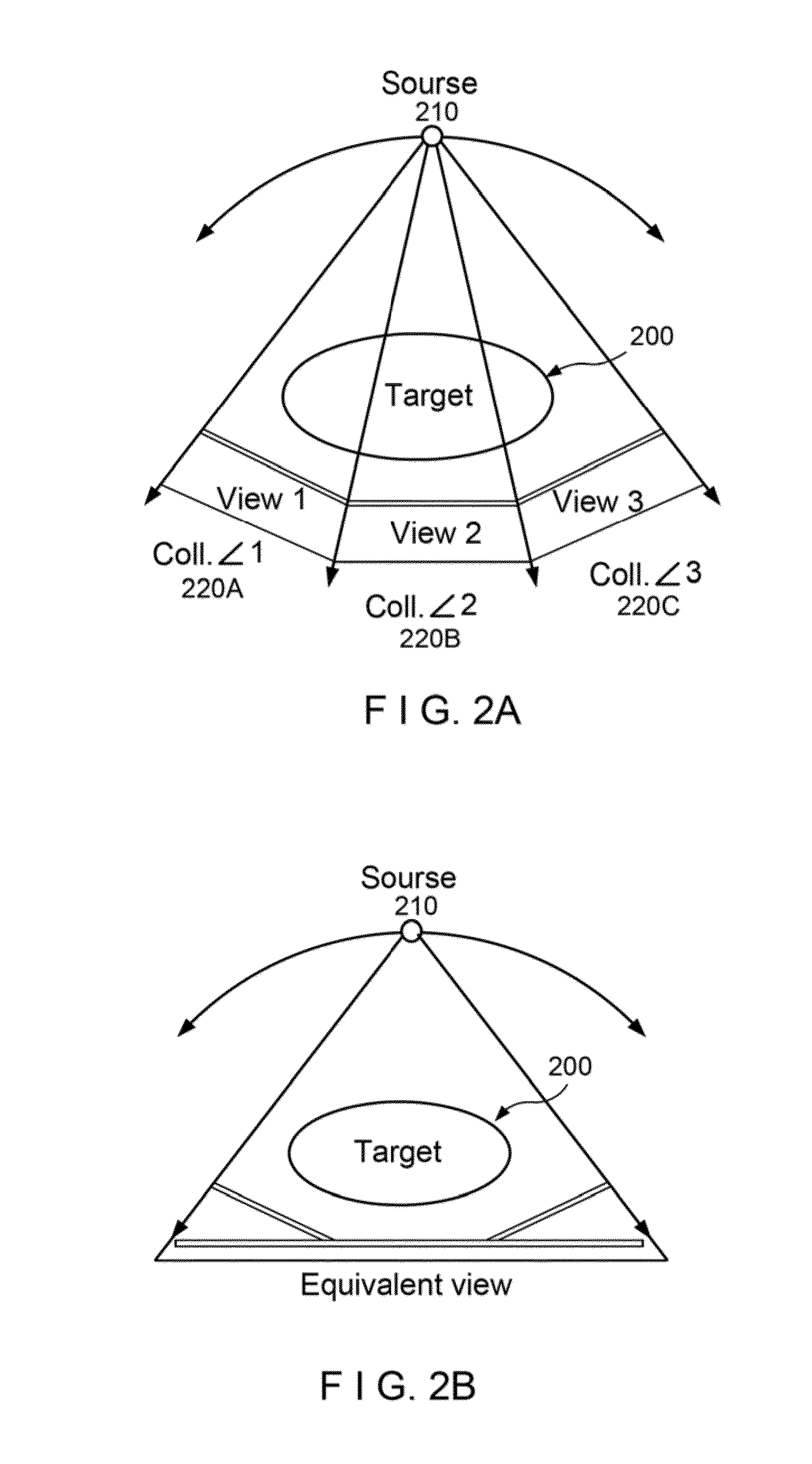System, method and computer-accessible medium for providing a panoramic cone beam computed tomography (CBCT)
a computed tomography and cone beam technology, applied in the field of medical imaging, can solve the problems of compromising the accuracy of target delineation, difficult to identify the treatment target and surrounding critical organs for image-guided setup, and many drawbacks in the current implementation of cb
- Summary
- Abstract
- Description
- Claims
- Application Information
AI Technical Summary
Benefits of technology
Problems solved by technology
Method used
Image
Examples
Embodiment Construction
[0012]To address at least some of these drawbacks, exemplary embodiments of system, method and computer-accessible medium can be provided which can utilize and exemplary “panoramic CBCT” technique that can image patients at the treatment position with an imaging volume as large as practically needed. As shown in FIG. 1, a collision may not occur for a half-scan rotation (e.g., 180°+θcone) if the gantry head 125 rotates on the “far” side of the couch 135. According to certain exemplary embodiments of the present disclosure, it is possible to provide an imaging panel which can be large enough to encompass the whole anatomy for a full-fan, half-scan CBCT acquisition so that the linac head 125 does not have to rotate to the “near” side of the couch. Since an imaging panel of this size may not exist, according to one exemplary embodiment of the present disclosure, it is possible to split the view of the this large imaging panel into smaller ones that can be imaged with the existing imagi...
PUM
 Login to View More
Login to View More Abstract
Description
Claims
Application Information
 Login to View More
Login to View More - R&D
- Intellectual Property
- Life Sciences
- Materials
- Tech Scout
- Unparalleled Data Quality
- Higher Quality Content
- 60% Fewer Hallucinations
Browse by: Latest US Patents, China's latest patents, Technical Efficacy Thesaurus, Application Domain, Technology Topic, Popular Technical Reports.
© 2025 PatSnap. All rights reserved.Legal|Privacy policy|Modern Slavery Act Transparency Statement|Sitemap|About US| Contact US: help@patsnap.com



